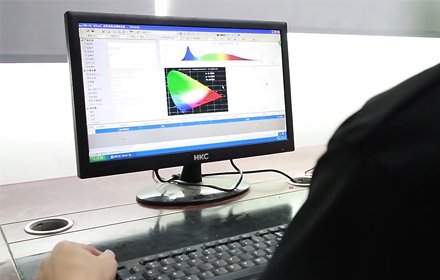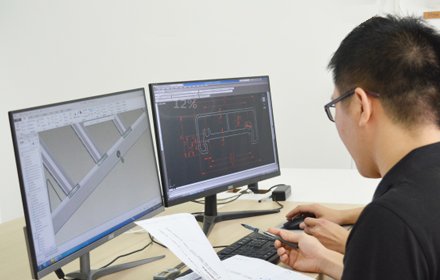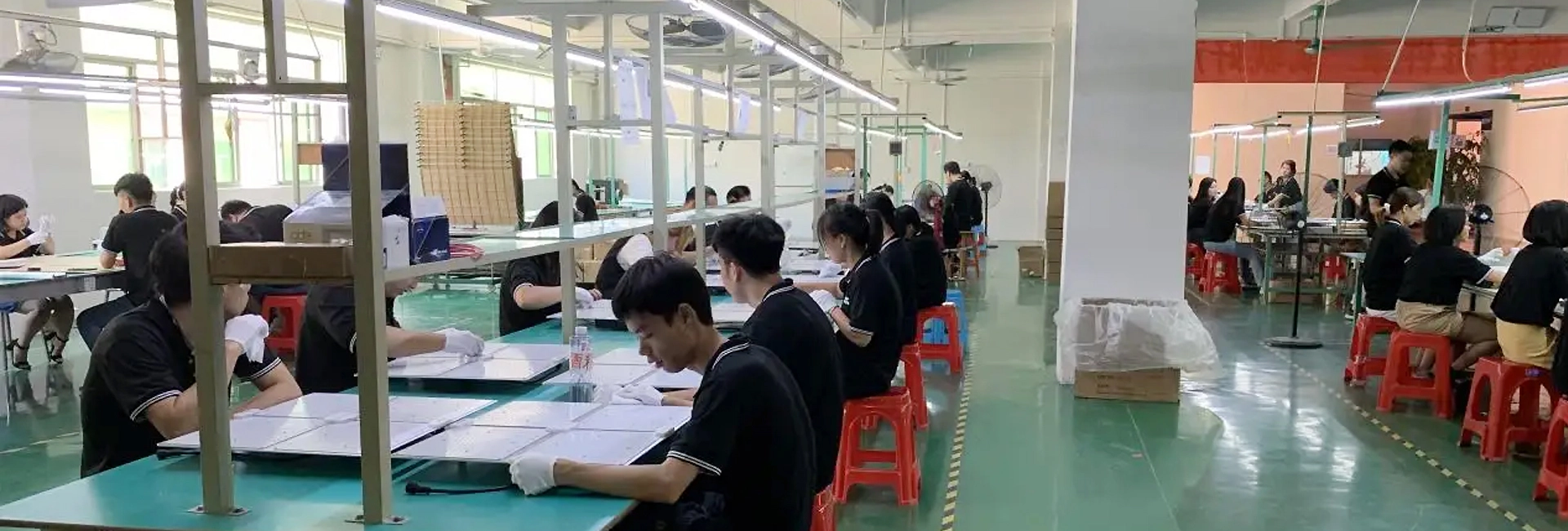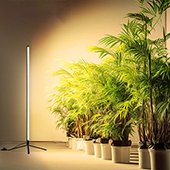Menu
Why Are LED Grow Lights So Expensive?
Amy likes indoor gardening in a bustling city corner and has a secret garden. This garden is unique because it’s not outdoors; instead, it’s inside her carefully arranged apartment—a tiny high-tech greenhouse full of technology and green life.
In this amazing space, various plants thrive and grow like spring all year round. However, it’s not thanks to natural sunlight; it relies on efficient, energy-saving, and mysteriously expensive LED plant lights.
Maybe you’re a greenhouse grower, looking to extend the growing season. Perhaps you’re a cannabis cultivator, working to nurture the most vibrant buds. If you’re at the forefront of vertical farming, driving the development of indoor agriculture. Whatever your specific application, LED grow lights have become a game-changing tool.
LED grow lights are poised to increase yields, improve plant quality, and reduce operating costs, but their initial investment might make you hesitate.
Why are LED grow lights so expensive?
Here, I’ll briefly explain the factors contributing to the cost of LED grow lights. Hopefully, by unraveling these elements, you can better understand why LED grow lights represent a strategic investment in the future of indoor farming businesses.
Table of Contents
High-End Nature of Core Technology and Research Costs
Specialization and Complexity of Spectrum Design
When discussing the staggering prices of LED grow lights, a crucial point that must be addressed is the spectrum design behind them. It’s like the sun being the magical colorist in nature for all plants to thrive, and our LED grow lights have to play the same role.
Firstly, to ensure that various plants receive appropriate light nourishment at different growth stages, designers and engineers need to precisely simulate the sunlight spectrum – it might sound unbelievable, but it’s true!
They have to create a “recipe” of light with different wavelengths tailored to the specific needs of various plants.
For example, seedlings may prefer a “nutritious meal” rich in blue light, helping them grow quickly and tall. When it comes to flowering and fruiting, there will be more red light, acting like a ripening agent to promote the formation of flower buds and full fruits.
Moreover, the research and development process for this light formula is both a brain-intensive and costly undertaking. The research teams not only need to delve into how plants “consume” light (i.e., absorb and utilize light energy) but also conduct repeated experiments with different combinations of LED light sources to find that “golden ratio” that makes plants grow happily.
Additionally, each plant and every growth cycle may require a unique spectrum formula. This implies a significant amount of experimental verification and continuous adjustment and optimization, with each step accompanied by real research and development investments.
So, you see, it’s this specialized and meticulous pursuit of spectrum design, along with the substantial research and development investments, that gives LED grow lights their high price tag.
But this investment is worthwhile because it ensures that these lights can provide the most suitable and efficient light environment for plants, making indoor gardening more scientific and efficient.
We, the VantenLED team, offer customization services and can be contacted for more information on customization if needed.


Selection of High-Quality LED Chips and Driver Power
You might not be aware, but the core of LED grow lights is those tiny LED chips that sparkle with intelligent light.
Think of them as the “nutrient source” for plants. They efficiently convert electrical energy into light, and it’s not just any color of light – it must be a carefully crafted special spectrum to meet the plants’ needs.
These high-performance LED chips aren’t cheap. They utilize advanced semiconductor technology, emitting light at specific wavelengths while ensuring stability and efficiency over extended periods of operation.
In other words, a portion of the money you spend goes into these high-end light sources that are both “tailor-made” and have “long-lasting endurance.”
Another crucial player is the driver power supply – it’s the heart that ensures the entire system runs smoothly.
A good driver power supply not only allows LED chips to precisely output the required current and voltage but also maintains a consistent operational state in various environments, preventing overheating or overload damage to the lights.
For example, if your home’s LED grow light acts impulsively, flooding plants with light today and staying dark half the day tomorrow, the plants might end up feeling “mentally split.”
So, choosing a high-quality driver power supply with features like precise control, temperature protection, and a long lifespan is crucial. The cost of this component should not be overlooked, as it directly affects the reliability and lifespan of the entire system.
Just like we can’t be careless about every meal when raising children, investing in high-quality LED chips and driver power supplies is essential when choosing LED grow lights.
Although such a configuration may make the lights seem a bit pricey, in the long run, they provide the most suitable light environment for your plants, helping them thrive. This ensures your indoor gardening journey is not only worry-free but also fulfilling.
Manufacturing Process and Production Costs
Just like when crafting a sunlight bottle tailored for plants, each LED light source here is like a star in this magical bottle.
To ensure every leaf basks in uniform and gentle light, it’s like meticulously arranging a star-studded party scene. We rely on precise packaging technology to neatly and orderly place each LED chip inside the light fixture.
This step isn’t just a simple arrangement; it demands a high level of craftsmanship. Any slight deviation in position or uneven light intensity might result in certain corners of plants not receiving sufficient light nourishment. Naturally, this level of detailed work tends to elevate production costs.
Next, when it comes to heat dissipation design, it’s like equipping this glowing and warming little sun with its exclusive air conditioning system.
LEDs generate a fair amount of heat during extended operation. If this heat isn’t dissipated promptly, not only will the brightness of the light source be compromised, but it could also prematurely wear out the LED chips.
So, those high-quality LED grow lights typically feature efficient heat dissipation devices, such as aluminum alloy heat sinks, and heat pipe cooling systems, and some even come with small fans to assist in cooling.
Designing these components, choosing durable materials, and assembling them correctly – each step is like playing a high-tech version of a building block game. However, this game isn’t cheap, as the investment directly impacts the final pricing of the product.
Moving on to quality control, it’s like providing a personal coach for each light fixture.
Starting from the selection of raw materials, supervising through component production, product assembly, and up to the final health check before leaving the factory – ensuring that every light meets the ideal standard.
The challenges in this process include but are not limited to testing the reliability and durability of materials, checking if the light source brightness remains consistently stable, and ensuring the overall light structure withstands the test of time.
To maintain such a watertight quality management system, the human and material resources consumed in the background are a significant and unavoidable cost.

Cost-Effectiveness from Performance Advantages
Energy-Efficient with Low Power Consumption and High Light Efficiency
LED grow lights are like savvy energy-saving experts. Their photoelectric conversion efficiency is quite high, meaning that every penny you spend on electricity is maximally converted into the light energy plants need.
This is unlike traditional lighting devices that generate a lot of useless heat, wasting energy.
It’s similar to buying an efficient juicer that not only extracts more juice but also consumes less electricity. Such an investment is undoubtedly worth every penny.
Precise Regulation of Light Cycles and Intensity, Boosting Crop Yield and Quality
Different plants have vastly different light requirements at various growth stages, and LED lights can flexibly meet these needs. It’s like customizing an exclusive sunlight menu for the plants.
As a result, whether it’s germination, flowering, or nutrient accumulation, each stage receives the most suitable light stimulation, naturally leading to higher yields and better quality.
Long-Term Energy and Maintenance Cost Savings in Extended Use
With excellent heat dissipation design and stable light output, their energy consumption remains quite low over the long term.
In other words, despite the initial investment causing some furrowed brows, when you extend the ledger, you’ll realize the economic benefits LED grow lights bring in reducing energy consumption and maintenance expenses.
Environmental Attributes and Sustainable Development Value
The lifespan of LED grow lights typically far exceeds that of traditional lighting devices, meaning a significant reduction in waste generated over the entire usage period.
It’s like the energy-efficient light bulbs in your home. Although they may be more expensive upfront, their long-lasting nature not only reduces waste disposal issues but also, invisibly, aligns with the principles of a green lifestyle, lightening the load on the planet.
Who wouldn’t want to contribute to environmental protection while enjoying the pleasures of indoor gardening?
Now, let’s talk about new agricultural models, such as enclosed farms or vertical farms. These spaces often have limited room, and natural sunlight conditions are frequently restricted. This is where LED grow lights come in handy.
They act like carefully crafted artificial suns, allowing for on-demand adjustments to spectrum, intensity, and duration. This ensures crops receive ample light in any environment, enabling efficient production.
Moreover, in these high-tech farms, the low energy consumption of LED lights makes large-scale cultivation more environmentally friendly and sustainable.
Even in the heart of urban centers within tall buildings, we can create a vibrant miniature farm using LED grow lights. This not only saves land resources but also reduces transportation costs, truly realizing a green and efficient modern agricultural model.


Summary
Now that we’ve thoroughly dissected every aspect of LED grow lights, let’s summarize.
The main reasons why LED grow lights are relatively expensive can be attributed to several factors:
High Technological Content: Just like preparing a well-rounded gourmet meal, it requires a careful selection of ingredients (light source chips) and cooking techniques (spectrum design), along with advanced kitchen tools (heat dissipation systems).
Significant Research and Development Costs: From understanding the preferences of plants (light requirements) to fine-tuning the optimal recipe (light cycle and intensity control), each step involves a blend of science and practical application.
Durability and Longevity: Similar to a reliable friend who accompanies you through the changing seasons, LED grow lights reduce resource waste from frequent replacements. In the long run, they prove to be both cost-effective and environmentally friendly.
The future development trend of LED grow lights looks promising. With continuous technological innovation, we can anticipate the emergence of more precise, energy-efficient, and affordable products.
It’s similar to the evolution of smartphones – initially intimidating in terms of price, but as time goes on and various upgrades enhance functionality and performance, products become more accessible to the general population.
Likewise, LED grow lights are expected to lower costs with mass production and technological iterations. This will make this green technology more affordable for more households, farmers, and even urban agriculture projects.
Simultaneously, an increase in market penetration will drive optimization and upgrades across the entire industry chain. Economies of scale will further reduce unit costs.
With growing concerns about sustainable development and food safety, the application of LED grow lights in closed, vertical farms, and similar domains will become more widespread. The economic benefits and social value brought about by these lights will be better reflected.
Although the current price of LED grow lights might give you pause, looking from a future perspective, they are undoubtedly a brilliant gem in modern agriculture.
If you’re considering replacing HPS lights with LED grow lights or venturing into indoor LED cultivation, feel free to contact us for the latest information on LED grow lights.
Get in touch with us!
From custom light planning, to tailored quotes, and everything in between, our team of horticulture experts are always ready to assist.




